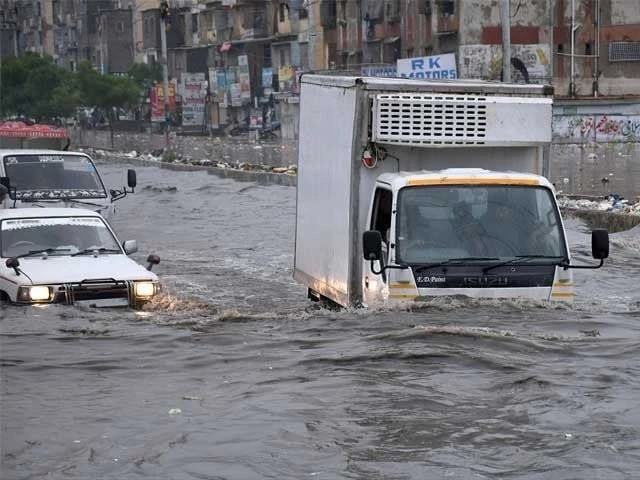National Disaster Management Authority (NDMA) issued a warning on Thursday as the meteorological department predicted widespread rain and thunderstorms across the country from August 29 to September 2, warning of possible flooding and landslides in several regions.
According to NDMA, northern and northeastern districts in Punjab, including Rawalpindi, Attock, Jhelum, Chakwal, Lahore, Gujranwala, Sialkot, Gujrat, Narowal, Hafizabad and Mandi Bahauddin, are probably witnessing heavy rain on August 30 and 31, August, raising concerns.
The central and southern Punjab is also expected to receive rainfall from August 29 to 31, with low -lying areas at risk of flooding. Districts including Multan, Dera Ghazi Khan, Rajanpur, Layyah, Bhakkar, Sahiwal, Bahawalpur, Bahawalnagar and Rahim Yar Khan can experience flood -like conditions.
In Khyber-Pakhtunkhwa, heavy rain is expected from 29 to 31 August.
جہلnd کے ب ب ل کیچnalٹ ایازاز یں فال اcrib 29 اگ تا 2 سivity ک ب ب م م۔۔ ج v pic.twitter.com/zbmv0jmppv
– NDMA Pakistan (@ndmapk) August 28, 2025
Azad Jammu and Kashmir, including Muzaffarabad, Bagh, Haveli, Kotli, Mirpur and Bhimber, can have an intense rain between August 29 and September 2 with landslides a potential threat.
In Gilgit-Baltistan, heavy rainfall is expected from August 29 to 31, with authorities warning of landslides and the risk of flooding of Glacial Lake (GLOF) in districts, including Gilgit, Skardu, Hunza, Diamer, Astore, Ghizer and Ghanche.
Sindh’s coastal districts, including Karachi, Thatatta, Sujawal, Badin and Tharparkar, are expected to receive heavy rain between August 30 and September 2.
NDMA warned that Karachi is facing the risk of urban flooding due to potential rainfall. Interior Sindh districts, including Hyderabad, Dadu, Sukkur, Ghotki, Larkana, Jacobabad and Kashmore, could also witness stormy rain between August 30 and September 1.
In Balochistan, coastal and eastern districts such as Gwadar, Kech, Panjgur, Khuzdar, Lasbela and Kalat are likely to be hit by rain from August 29 to September 1 with the possibility of flooding in low-lying areas.
It also warned that continued rainfall could intensify the flooding conditions along Rivers Ravi, Sutlej and Chenab. “People should immediately contact local authorities and rescue officials in emergencies,” NDMA said, adding that emergency relief operations were underway and were closely monitored. “All institutions ensure readiness to deal with any crisis.”
Punjab is currently facing severe floods as the water level in the provincial’s largest rivers – Chenab, Ravi and Sutlej – remains dangerously high with swinging currents at several main works. The disaster has left 17 people died, while many others are still reported missing.
Floods in Ravi and Ravi Rivers in Chenab, Sutlej and Ravi have destroyed nearly 1,400 villages over Punjab and displaces more than 1.2 million people.
Along Chenab, 991 villages and 769,281 people have been affected, while Ravi River’s Bank Burst has affected 80 villages and 74,775 inhabitants, and Sutlej has flooded 361 villages and displaced 392,768 people.



